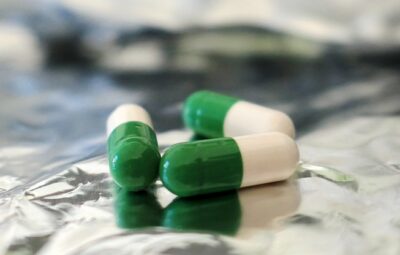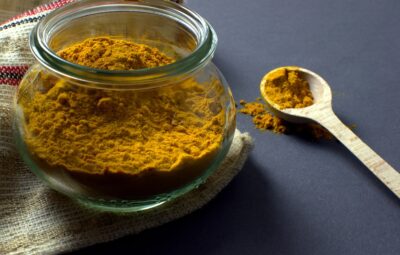Carnosine is concentrated in the brain, heart, and muscles. Carnosine has been shown to slow the aging of human cells and protect against processes that cause aging, such as glycation and mitochondrial dysfunction. As people age, the levels of carnosine in their bodies decrease, so taking supplements is an important part of delaying the aging process.
As a result, carnosine has been referred to as a natural “antiaging” compound. Mounting evidence documents the ability of carnosine to prevent many of the detrimental effects of aging.1,2 As a result, carnosine has been referred to as a natural “anti-aging” compound.
Carnosine protects us from damage when we are young by shielding us from oxidation, glycation, DNA damage, and other reactions that can hurt tissues and organs.
The problem is that as we grow older, carnosine levels in the body decline, which can lead to a decrease in cognitive function, mobility, and metabolic control, as well as increased susceptibility to cancer and cardiovascular problems.
Carnosine supplementation has been shown to extend life spans in laboratory animals of different species. There is a shift in the way conventional medicine views aging.
What is Carnosine?
Carnosine is a molecule that helps to deal with the biochemical paradox of life, which is that the same elements that are necessary for life (oxygen, glucose, lipids, protein, and trace metals) can also cause destruction.
Carnosine is made up of two amino acids, alanine, and histidine. Its concentration decreases as age increases.
Scientists Explore Carnosine’s Longevity Benefits
Carnosine is a protein that is found in high concentrations in the brain, heart, and muscles. Its function is to protect these tissues from the deleterious effects of metabolism.
Young organisms have high levels of carnosine in tissues that require a lot of energy. Our levels of carnosine decline as we age because our bodies produce less of it and because the carnosine we have is more vulnerable to destruction. The conditions of diabetes and metabolic syndrome produce accelerated aging, which in turn decreases the production of carnosine and increases its destruction.
The findings of the study suggest that “carnosine deficiency” may be partly responsible for the visible aging and loss of function in many areas of the body that occurs as we get older.
If we could find a way to increase the carnosine levels in our bodies, we might be able to prevent some of the effects of aging.
Here are a few of the most dramatic observations in recent years that demonstrate how carnosine supplementation extends life spans:
- Carnosine slows the aging of human cells in culture dishes. Scientists added carnosine to cultures of young cells. While the control cells developed the typical “old” appearance, those grown in high carnosine concentrations retained their youthful appearance. When these youthful-appearing cells were transferred to culture dishes lacking extra carnosine, they quickly developed the “old” appearance of control cells of the same age. Yet, when scientists took old cells, approaching the limits of their life span, and transferred them into culture dishes containing high carnosine concentrations, they found that the cells rapidly became rejuvenated to resemble young cells.
- Carnosine extends the life span of rotifers, a microscopic aquatic organism now being used as a model of aging in many laboratories. In this experiment, scientists tested many different antioxidant compounds, identifying carnosine as one of just four that had significant effects on the organisms’ longevity.
- Carnosine extends the life span of fruit flies, another organism commonly used to study aging, by up to 20% in males. Normally, male fruit flies die much sooner than do females, but when fed a steady diet, including a carnosine supplement, the males attained the same age as the females.
- Carnosine extends the life span of laboratory mice, complex, warm-blooded mammals with many of the aging features common to humans.
In this study, scientists used a strain of mice that ages much faster than normal and gave them food that was supplemented with carnosine. The animals not only lived longer, but they also kept the physical and behavioral characteristics of younger animals. After that, the researchers tried the supplement on mice that were missing the dopamine receptor D2, finding that the missing gene had no effect on the supplement’s capacity to relieve symptoms of the disease. The scientists then tested the supplement on mice that were missing the dopamine receptor D2, and found that it still had the same effect of relieving symptoms of the disease. Carnosine improved the animals’ physical appearance and kept them in better condition than animals that didn’t receive carnosine.
WHAT YOU NEED TO KNOW: CARNOSINE PROVIDES BROAD-SPECTRUM DEFENSE AGAINST AGING
- Carnosine is a natural anti-aging constituent in your body.
- Carnosine fights such age-inducing processes as oxidation, glycation, protein cross-linking, mitochondrial dysfunction, telomere shortening, and transition metal accumulation.
- Carnosine levels decline with age, leaving you with progressively weaker defenses against age-related processes.
- Carnosine supplementation can restore youthful carnosine levels in blood and tissues, and it extends the life spans of experimental animals of many species.
- Carnosine supplementation may protect against neurodegenerative diseases and stroke; it also enhances exercise performance and comfort, ameliorates diabetes and its complications, and protects heart muscle and blood vessels from atherosclerosis.
CARNOSINE TARGETS SIX MULTIPLE MOLECULAR AGING MECHANISMS
Initially, researchers considered carnosine as just an antioxidant molecule. Carnosine has good antioxidant effects, but it is not the most powerful antioxidant in the body. The researchers were caught off guard by the fact that supplementation with other antioxidants didn’t produce the same increase in longevity as carnosine did.
Clearly, something else is going on.
A few scientists were not expecting the news that carnosine affects six different processes that are connected to aging. Now that we know how carnosine works let’s briefly examine each of its effects.
- Oxidation at the cellular and tissue levels is one of the major contributors to the aging of organisms. Carnosine scavenges oxygen and nitrogen free radicals and reduces their destructive impact on fat and DNA molecules. These effects are a powerful means of stopping atherosclerosis and cancer formation, respectively
- Glycation, the formation of molecular compounds of glucose with vital biomolecules such as enzymes and other proteins, is another major cause of aging. Glycated proteins induce potent oxidant stress and trigger inflammatory responses that hasten the aging process. Glycated proteins also form “cross-links” that bind them together, reducing their youthful flexibility and function. Carnosine takes a “sacrificial hit” and allows itself to be glycated, sparing other vital structures and preventing dangerous protein cross-linking.
- Accumulation of excess metals. Carnosine chelates, or binds to, ions of copper, zinc, and iron, which in excess are known to induce the production of amyloid beta and other proteins found in Alzheimer’s and Parkinson’s diseases.
- Cross-linked proteins are the result of accumulated oxidant damage and glycation in youth. They are eliminated by intracellular structures called proteasomes.65 With increasing age, however, proteasomal degradation drops off, allowing the dysfunctional proteins to accumulate and interfere with cellular function. Carnosine can react with these abnormal proteins, hastening their elimination.
- Telomeres are the repeating DNA sequences at the ends of chromosomes that function as a kind of “molecular clock,” becoming shortened with each cycle of cell replication. When telomeres become too short, cells die. Carnosine reduces damage to telomeres and slows their rate of shortening in experimental systems.64
- Mitochondrial dysfunction accelerates aging by depriving cells of the energy they need and by adding to their oxidative burden as mitochondria lose their efficiency. Carnosine alleviates all of these alterations, especially in vulnerable brain cells where mitochondrial dysfunction contributes to Alzheimer’s and other neurodegenerative diseases.
Why do older people look different?
The main changes that occur during aging have to do with the proteins in the body. Proteins play a major role in the daily function of living organisms, and changes to protein levels can have a big impact on the function and appearance of the body.
It has been found through many studies in the past decade that protein change is a big cause of aging and degenerative diseases. The changes that happen to the skin as we age are the result of oxidation and other processes like glycation.
Our body is primarily made up of proteins. Proteins in our bodies tend to change in a destructive manner as we age, mostly due to oxidation, glycation, and another process called carbonylation. This is because our body’s antioxidant system and other defense mechanisms can’t fully protect proteins. This means that the carbonyl groups attach to the protein and phospholipid molecules. Proteins are split during proteolysis.
Protein carbonylation is associated with cell aging and cell death because it occurs before the membrane is lost. In order to understand the effects of proteolytic decline and the formation of abnormal proteins, it is necessary to understand how these changes can affect cellular function.
This denaturation and cleavage of proteins that are interrelated include oxidation, carbonylation, crosslinking, glycation, and the formation of Advanced Glycation End Products (AGE), as was explained earlier. Free radicals are damaging agents that are heavily involved in the aging process. They are also responsible for well-known signs of aging, such as skin aging, cataracts, and nerve degeneration (e.g., memory loss and dementia).
A vast amount of research indicates that carnosine can prevent protein degradation.
When carnosine reacts with a molecule that contains a carbonyl group, it forms a new molecule called protein-carbonyl-carnosine. This new molecule is unable to react further and thus serves to protect other proteins from reaction and reversing denaturation.
How does carnosine rejuvenate cells?
Carnosine restores normal cell cycle control.
- To understand how this is achieved, think of an engine whose oil is not changed regularly.
- When the lubricating effect of the oil is used up, dirt is created, and sludge forms on important parts of the engine. The mud accumulates and prevents the engine from working properly until the engine eventually breaks down.
- When protein ‘sludge’ accumulates, the cells of the cell cycle become blocked. This could reduce the efficiency of cell division and, perhaps more importantly, allow damaged cells to reproduce.
- The result is increasing chromosomal instability, which leads to degeneration and cancer. Another possible result is cell aging, in which the cell cycle stops.
- The protein carbonylation, therefore, becomes a potentially fatal disease.
- Carnosine ensures that we have healthy, intact proteins and ensures timely renewal.
Carnosine is much better than older antioxidants like vitamin E and selenium. People used to think these were very effective, but now we know they aren’t as good as carnosine. They suppress some of the many pathways involved but have no effect on others, like glycation and carbonylation.
The importance of antioxidants has been undeniable, as they play a key role in preventing damage caused by reactive oxygen. It is unrealistic to expect an antioxidant to protect proteins from all forms of glycation and carbonylation. Antioxidants are important, but they cannot replace the other tools that are needed.
Carnosine is a natural compound that protects proteins from degradation. It was created by evolution to control the many factors that work together to degrade proteins in the body.
The chemical reactions that break down the biological structure and function during aging are caused by the toxic effects of the most basic elements of body chemistry – oxygen, sugar, lipids, and essential metals. We cannot live without these biochemical elements, but now we have the knowledge from nutritional science to help us control side effects better.
Proteins are not the only molecules to be denatured by carbonylation – phospholipids are also affected. Damage to the central and peripheral nervous system caused by the carbonylation of phospholipids typically results in memory problems and other deteriorations in cognitive abilities.
Carnosine not only helps to prevent the carbonylation of phospholipids but also protects the nerves.
Carnosine is involved in the removal of harmful chemicals that are produced in the skeletal muscles during physical activity. Carnosine protects muscles from injuries, strengthens them, and helps them recover quickly after a workout.
Summary
Carnosine’s protective effects against aging processes are due to its ability to fight multiple causes of aging.
-66 Carnosine can help protect against damage from oxidation, glycation of important proteins, accumulation of acid in muscle and heart tissue, transition metal ions, age-related protein cross-linking, mitochondrial dysfunction, and age-related telomere shortening.
The many different ways this drug works together help to prevent age-related diseases such as cognitive decline and dementia, to make it easier to exercise and improve performance, to slow down the progression of conditions like diabetes, and to protect against diseases such as atherosclerosis and heart disease. Since carnosine has anti-aging properties, it is often referred to as the “antiaging dipeptide.”







